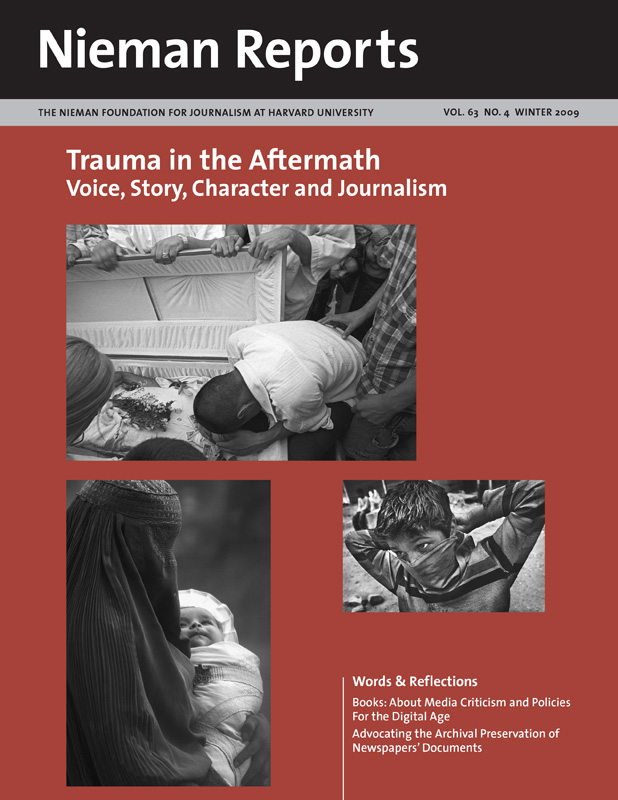Alexander McFarlane, a psychiatrist who heads the Centre for Military and Veterans’ Health at the University of Adelaide in Australia, spoke at the “Aftermath” conference about how trauma affects the brain and the failure of language to express those feelings. Edited excerpts follow:
Trauma disrupts the integration of the brain; its networks do not talk to each other properly so our capacity to form representation is changed. This fundamental bedrock of clear communication is an acquired abnormality following trauma experience. One critical region that is affected is the left dorsal lateral prefrontal area of the brain, an area central to language formation. As a consequence, people who are traumatized have a disrupted affective language and struggle to use words with the same facility as people who don’t experience trauma. The facility and capacity of language to express trauma is a very real issue because it disrupts this primary human quality.
I would like to begin not with the words of mental health professionals, but with those of authors and poets who speak through personal experience. Their struggle to find a voice through self-reflection offers us a collective exploration of the difficulty we have in speaking about trauma.
“Landscape With the Fall of Icarus’’ by Flemish painter Pieter Bruegel does not appear on superficial examination like the depiction of a disaster. Rather it conveys a sense of everyday serenity. The legend of Icarus is about the young man who stuck feathers to his arms and legs with beeswax so as to fly like a bird. Like any self-respecting adolescent he didn’t take his father’s advice of caution and he flew too close to the sun. The sun’s rays melted the wings with the obvious consequences. This is not the immediate image of Bruegel’s painting, where we see a shepherd tending his flock, the serf plowing the field, a fisherman, and a galleon sailing by. Only when we look at the corner of the picture do we see a leg disappearing into the water with the surrounding wavelets adorned with the feathers that had melted free.
The subtlety and strength of expression of this painting inspired W.H. Auden to write a poem that captured the essence of the visual sentiment in language:
About suffering they were never wrong,
The Old Masters; how well, they understood
Its human position; how it takes place
While someone else is eating or opening a window or just walking dully along;
The problem is that too many journalists and too many mental health professionals walk dully along and keep eating and they do not see. Why did W.H. Auden understand what he saw? Like many of the great authors of the 20th century he had been involved in the Spanish Civil War and it is telling how the direct and personal experience of people’s encounters with trauma often is what galvanizes them to explore new genres of expression.
Shakespeare also had an uncanny sense of the challenge to speak of what one sees. In “Macbeth,” Macduff runs onto the stage having found the slain body of King Duncan and cries, “O horror, horror, horror! Tongue nor heart cannot conceive nor name thee.” The greatest wordsmith of all time understood the vacuum of language to convey the depth of emotion that Macduff was struggling to utter. The philosopher Nietzsche, who was an ambulance officer in the Franco-Prussian War, said “that for which we find words is something already dead in our hearts. There is always a kind of contempt in the act of speaking.” I think this is true: The most painful thoughts and feelings we have about ourselves, we never really quite say to another person.
Ed Murrow was one of the first journalists into Buchenwald concentration camp after the end of the Second World War. He said of that experience “I have reported what I saw and heard but only part of it. For most of it I have no words.” Nobody could better capture the dilemma of the limitations of language. A similar sentiment was expressed by a military photographer whose horrific images showed the naked emaciated bodies being bulldozed into graves. He said, “No words could match this place. I’ve read about camps like this but never realized what it really was like. It must be seen to be believed.” Here we have accurate testimony from two people who use two different genres of expression that reflect on exactly the same dilemma.
Tolstoy, who was one of the first war correspondents, often reflected on the awfulness of human suffering in his accounts of the Crimean War. In one passage, having witnessed a military surgeon perform an amputation, he writes that as a participant “you will see war not as a beautiful, orderly and gleaming formation with music and beaten drums, streaming banners and generals on prancing horses, but war in its authentic expression—as blood, suffering and death.” The introduction to the Penguin edition of Tolstoy’s “The Sebastopol Sketches’’ quotes R.F. Christian stating that “the hero of his story is truth, and truth is not at all lovely and not at all reconcilable with the military communiqués of war correspondence.” This tension between official accounts and the narratives of those who struggled with the reality of combat are the dilemmas he then set about exploring in his epic novel, “War and Peace.”
Despite all the stories that have been written about the horror and suffering of war, it remains an inescapable part of humanity. Wars become more complex and bloody as the enemy blends with civilians and the Geneva Conventions are circumvented. I will finish with the words of Auden who prophetically reflected on the tragedy of the endless cycle of violence when he wrote on the first of September, the day the Second World War broke out:
The unmentionable odour of death
Offends the September night.Accurate scholarship can
Unearth the whole offence …
The enlightenment driven away,
The habit-forming pain,
Mismanagement and grief:
We must suffer them all again.


